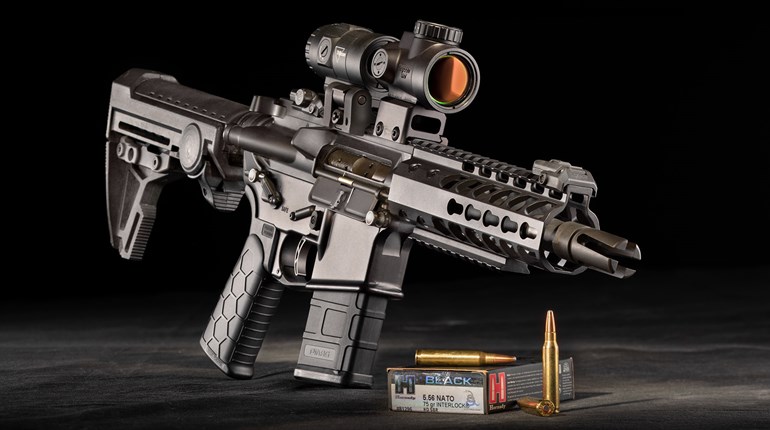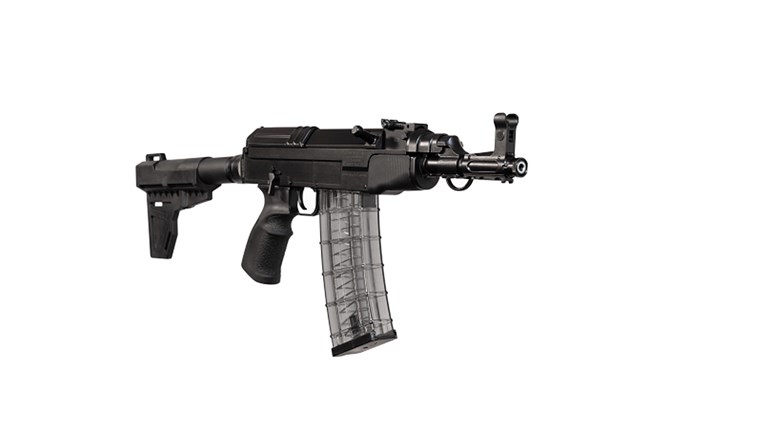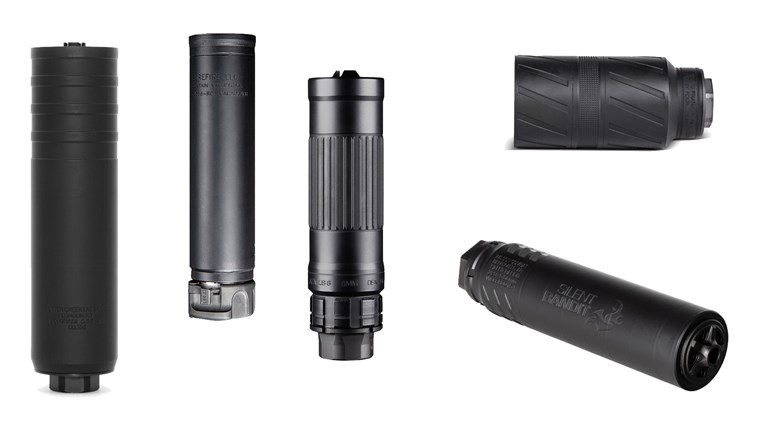
In the vast and ever-expanding sea of black rifles, there has been one constant island of innovation in the industry and that is Lewis Machine and Tool (LMT) out of Milan, IL.
In 2003, LMT introduced the most advanced upper receiver in the industry. Perhaps the most significant enhancement since the release of the M4 carbine by Colt in 1993, the MRP or Monolithic Rail Platform was the first one-piece monolithic upper receiver. The MRP had quad Mil-Std 1913 rails, forward assist, fired-cartridge-case deflector and ejection-port cover. It was manufactured from a solid 7075 T6 forging.
Not only was the concept brand new, but so was the gun’s ability to have its barrels changed out in minutes by the user. The user had the option to change out barrel lengths as well as calibers (5.56 NATO, .204 Ruger, 300 BLK and 6.8 Rem. SPC). Then the company went so far to offer two operating systems—direct-gas and external-piston—by just swapping out the bolt carrier and barrel assembly. A few years later, the company upped the MRP with the LM8 family, which takes the same technology but removes the three-, six- and nine-o’clock rails for a slick feel. Now the end user could place rail segments whereever needed and not have any excess rail that could be damaged. This was a possible pre-cursor to M-LOK and KeyMod.

There was one place where LMT did come up short. It offered the most-advanced upper receiver in the world, but the company stuck it on the standard Mil-Spec lower receiver at a time when the industry had made a shift to ambidextrous or mirror controls. This would include POF-USA, LWRCI, Smith & Wesson and even Colt, to name a few. Even foreign militaries have begun putting this requirement in contract tenders. At the same time LMT was in the competition for New Zealand’s next-generation battle rifle, and that customer wanted ambidextrous controls. The rifle was tested with standard receivers, but the final selected rifle would be the new MARS lower receiver. LMT was finally on the fast track to delivering the most-advanced upper receiver with the most advanced lower receiver on the market.
The MARS lower receiver starts with a receiver extension end plate that features a quick-detach socket for a sling. On the right side is a ambidextrous safety/selector lever, and a new ambidextrous bolt catch joins the lower. Like the one on the left, the ambidextrous bolt catch can be used to both lock the bolt-carrier group to the rear or release it. The magazine release is in the normal location. Over to the left side is the standard location of the bolt catch and safety/selector with the addition of an ambidextrous magazine release.
The magazine well has been modified with a much more flared and beveled mouth that permits easier insertion of the magazine, especially in low-level light conditions. Also, in addition to all these changes is a new all-weather trigger guard, which permits a gloved hand to actuate the trigger with little interference. Like all LMT rifles, the lower comes with the LMT/Ergo pistol grip. The lower also comes with an optional LMT-produced two-stage trigger. To top all this off, LMT has now released their own fully ambidextrous charging handle that can be actuated from either side with its proprietary, dual-sided, large tactical charging handle latches. LMT is offering this lower receiver as a component or as part of a complete rifle.

The MARS rifle provided for test and evaluation has a six-position telescopic SOPMOD stock. The upper receiver is the MRP CQB with the 16-inch, direct-gas barrel. The barrel has six lands and grooves and a 1:7-inch twist barrel. It uses a mid-length gas system and has a standard A2-style compensator. The MARS also sports the new LMT folding back-up sights, which are offered in both imperial and metric configurations. The rear sight is adjustable for windage with ambidextrous windage knobs. There is an L-shaped aperture offering a short-range and standard-range peep sights. The MARS came with a standard G.I. 30-round aluminum magazine, a sling and three rail covers. Additionally, a preset torque wrench that is used for removal as well as installation of the locking screws with the factory-preset 140-inch-pounds torque limiter.

Added to the rifle was a US Optics LR-17 3.2-17X scope—an excellent optic, but perhaps a little on the ambitions side for a 5.56 NATO rifle. The MARS was tested with aluminum G.I., Magpul Gen3 PMags, Magpul D-60 and Lancer AWM magazines. There were no failures to feed, fire or eject in more than 300 rounds fired.
If you are looking for the most-advanced modern sporting rifle in the industry with the capability to change out both barrel lengths and calibers, the LMT CQB-16 MARS is your rifle. It will serve military, law enforcement, self protection, target shooting, hunting and competition needs alike. There is now no penalty for being a southpaw.







































